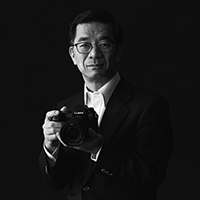Panasonic Q&A: Two GH5 successors, GH5 II AF improvements and a “Double Driving Force” for full-frame & MFT products
posted Wednesday, July 21, 2021 at 10:15 AM EDT

A few months back, Panasonic unveiled not one but two successor models to the popular Lumix GH5 mirrorless camera, the GH5 Mark II and the GH6. The GH5 Mark II shares a lot of similarities with the original model, both on the outside and under the hood, including using the same 20.3-megapixel, albeit with some tweaks like a new anti-reflective coating. There have also been some upgrades to performance and video recording modes and resolutions as well as additional live-streaming functionality beyond what the GH5 can currently offer.
The new Lumix GH6, meanwhile, is promising to be a completely new beast altogether, with an all-new sensor and image processor and some very impressive video specs, including 4:2:2 10-bit 4K 60p, 10-bit 5.7K 60p video, and unlimited video recording capabilities. We're still in the dark about most of the details on the new GH6, however, as it's just in the "development announcement" stage at this point. We don't even know what the camera looks like. However, with a price point of $2500 and its already impressive-sounding feature set, the new flagship GH6 is certainly aiming to be the professional and enthusiast-oriented photo/video hybrid camera.
Shortly after the product announcements, we were given the opportunity to have a Q&A session with the man in charge of the Panasonic Lumix division, Mr. Yosuke Yamane, Director of Panasonic's Imaging Business Unit. The wide-ranging interview touched on several topics, including the strategic decision about releasing two GH5 successor models, GH5 II image quality and AF improvements, and Panasonic's overall development strategy around creating both full-frame mirrorless and Micro Four Thirds-based product lines.
(Editor's Note: The following interview has been edited slightly for clarity and length.)
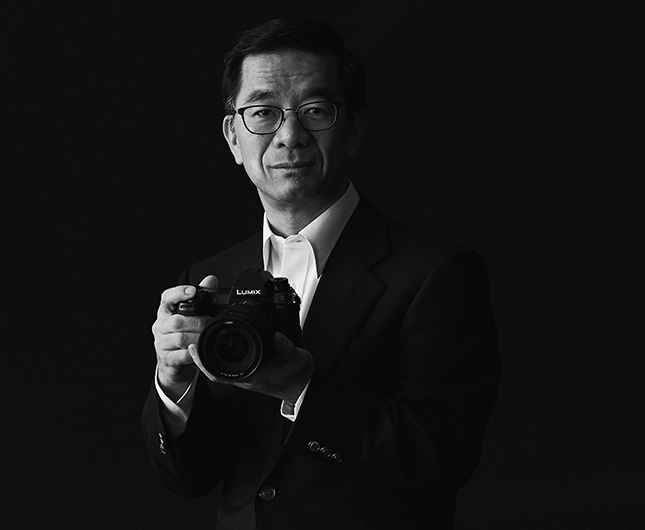
Jeremy Gray (JG): It's an interesting move announcing a refreshed model of the GH5 at the same time as announcing its successor, the GH6. Can you speak to the strategy of announcing the GH5 II and GH6 at the same time?
Mr. Yosuke Yamane: The LUMIX GH5 was released in 2017 and spread through YouTube, SNS [social networking services] and word-of-mouth, due to its excellent video performance, such as the world's first 4K60p video recording and 4:2:2 10bit video recording. It is used by a wide range of customers, including individual video streamers. Furthermore, due to the recent influence of the new coronavirus, the demand for video production and live streaming is rapidly expanding, and the need for cameras is becoming wider.
We aimed to have more creators use the successor model of the GH5 and came to the conclusion that different applications have respective optimal cameras, and so we proceeded with the development of two models, GH6 and GH5M2. The GH6 is a flagship model equipped with a newly developed image sensor and a newly developed image processor that enables cutting-edge video expression. The GH5M2 is a model that enables easier and higher quality live streaming in order to respond to the rapidly expanding [popularity in] video streaming, while improving the basic performance as a camera. With these two models, I am confident that compared to GH5 even more creators will be able to use LUMIX cameras.
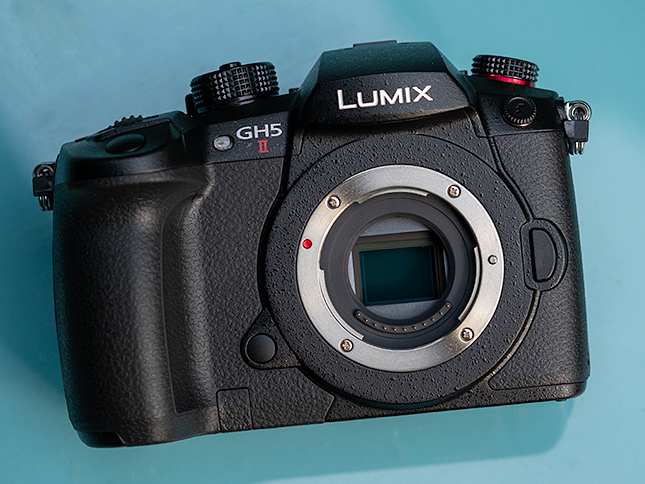
JG: The GH5 II leverages technology Panasonic developed for the S1H. This results in numerous improvements, including a slightly expanded dynamic range compared to the original GH5. The GH5 II uses the same image sensor, albeit with different image processing. Can you elaborate on how improvements in processing resulted in an extra 1/3 stop of dynamic range?
Mr. Yamane: First of all, I think it was important that we could further evolve the idea of image creation by first going through the development of a full-frame camera. In the development of the full-frame S series, we have refined the basic elements of image creation, such as color reproduction, sharpness, noise reduction and dynamic range, by continuing to meet the demands of our target high-end professional customers. In that process, we were able to evolve the way of dealing with noise and the way of thinking of gradation design to support high-quality image creation. It is difficult to tell the details because it is confidential, but by reflecting this design concept in the MFT model, I think that as a result, the GH5M2 is able to get a 25% benefit on the dynamic range compared to the GH5.
JG: The GH5 II promises improved autofocus, particularly concerning subject detection and tracking performance. Were these gains achieved primarily through increased processing power (hardware) or improved algorithms (software)?
Mr. Yamane: Well, basically it's both. We are focusing on the evolution of subject recognition, which enables more intelligent subject identification and more precise autofocusing. The GH5M2 is not only equipped with the latest hardware that supports deep learning, but also incorporates further improvements in the subject recognition algorithm, such as head recognition during portrait photography. I think that the AF performance of the GH5M2 can provide a more reliable user experience during actual shooting for customers who have used the LUMIX G series before.
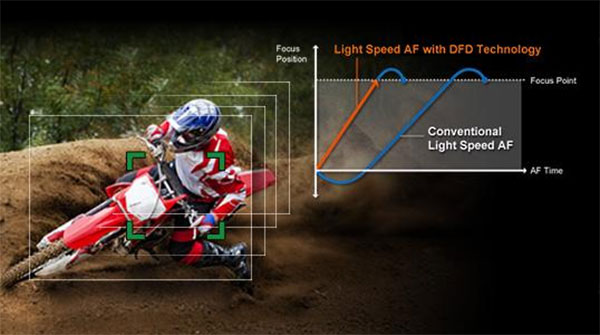
Dave Etchells (DE): What specifically has the added processor power let you do to improve DFD autofocus? Or is the improved AF performance more just a matter of more efficient/accurate algorithms? (For instance, has your modeling of lens defocus behavior become more detailed or more accurate? There are different ways of modeling defocus; have you changed anything fundamental about how you model it?)
Mr. Yamane: Thanks to the latest hardware, we are able to increase the processing speed of deep learning. And, thanks to the more advanced subject recognition algorithm, you can get more accurate and efficient AF operation.
There has been no fundamental change in the way we think about DFD modeling data, but as a summary, I believe that both the latest designed hardware and the improvements in the AF algorithm are contributing to the improvement of DFD.
DE: Do the new DFD algorithms let you get closer to the final focus before switching to contrast-detect? (That is, do they reduce the amount of time spent in the final, contrast-detect mode?) If that’s not the case, what has contributed most to the increased AF speed and improved tracking?
Mr. Yamane: In the new algorithm, DFD detection and contrast detection run side by side, and mutual information is used to improve the tracking performance. These have contributed significantly to the improvement of AF tracking performance and AF speed.
[DE note: At first this sounded to me like a departure from the normal two-step DFD autofocus cycle, where the camera first computes how far out of focus the subject is, moves the lens to the AF system's best guess of the correct focal setting and then performs contrast-detect AF from there. As I thought more about it though, it sounds like what's actually happening is they're now running DFD and contrast-detect calculations simultaneously and continuously. Contrast-detect AF is always the most accurate approach with static subjects, but can get fooled if the subject distance is changing between "looks". By running DFD continuously, they can tell if the subject is moving and in which direction, and so can more intelligently guide the lens motion and contrast-detection process. This makes perfect sense, but my impression has always been that the distance resolution (or more accurately degree-of-defocus resolution) is limited, or at least insufficient to guarantee crisp focus on its own. It may be though, that while its resolution is insufficient to achieve sharp focus by itself, its direct depth information may be enough to tell the contrast-detect process which direction it should choose to move the lens for its next focus tweak. By avoiding wrong guesses during the "focus wobble" process, continuous DFD information could significantly improve performance with moving subjects, especially those that suddenly change the direction of their movement.]
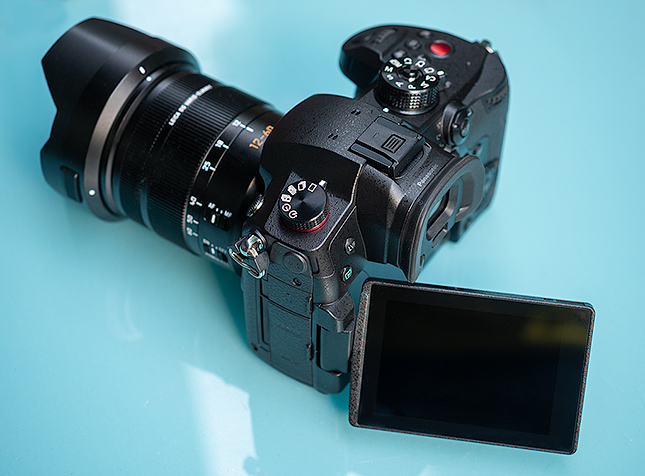
DE: Deep learning and convolutional neural nets (CNNs) have been finding their way into many camera functions (especially AF systems) lately. Does the new processor include any special provisions for executing deep-learning algorithms? (I understand that CNN processing involves a lot of matrix operations with limited precision. Does the new processor facilitate that sort of computation?)
Mr. Yamane: We are focusing on strengthening subject recognition, and strengthening deep learning plays a part in that. I can't answer the details, but we have put in various learning ideas, including CNN.
DE: Looking at all the AF improvements mentioned in our briefing on the GH5 Mark II, particularly the addition of animal-recognition and human-body tracking, it feels like this represents a very significant change in your whole autofocus approach. Face-detection and eye-tracking has been around for a while, long before AI/deep learning technology was available. Human-body and animal-recognition seem like clear signs that deep learning is now at the very core of your AF algorithms, though. What can you say about the extent to which the GH5 Mark II and GH6 AF technology is evolutionary or revolutionary, when compared to earlier models.
Mr. Yamane: For the GH5M2, the benefits of deep learning technology evolution are greater than for the conventional MFT models. ["conventional" meaning older ones?] Frankly speaking, since the first year of the new processor implemented in the GH5, we have improved the hardware performance every time through the G9 and S series. The AF algorithm has been improved from various perspectives from detection to control until today. Among them, we have incorporated various deep learning-based recognition information as a factor in the evolution of focus technology.
There is no end to improving AF performance. Meaning, these efforts have still not yet reached their goal. We will continue to evolve and improve how we utilize this recognition information and solve potential [focusing] problems that our customers might experience.
For sure the next step in these improvements is the GH6, but it is too early to tell the whole story at this early development stage of GH6. So, please look forward to more info later.
[DE note: This maybe needs a little unpacking. Yamane-san's reference to "conventional" MFT models is a little confusing. Per the italicized note we inserted above, perhaps he means older models using previous generations of their image processor? Reading between the lines, I'm wondering if what marks the difference between the GH5M2 and "conventional" models could be the inclusion of dedicated hardware for executing deep-learning algorithms? While deep learning requires absolutely massive number-crunching during the learning or "training" phase, the computational requirements for executing the algorithms are much more modest. They still can require a lot of processing to execute quickly, but the processing required is of a more limited sort than most general-purpose computing or image processing requires. Specifically, so-called convolutional neural nets (CNNs) need lots of multiplication operations and (especially) lots of memory to store the coefficients and intermediate results, but they don't need much accuracy in either. Running these sorts of algorithms on a conventional 32-bit general-purpose or image processor makes very inefficient use of computing and memory resources, because you're using only half, a third or even less of the available bits at any given time. Special-purpose hardware using much smaller data sizes and with more memory distributed across the compute fabric can be much, much more efficient at running CNN code than conventional architectures. I suspect this is what Yamane-san is talking about. While he couldn't talk specifically about what they've done, my guess is that their latest generation of image processing chips has a significant amount of hardware on them dedicated to CNN computation.
He also mentions improvements from "detection to control", highlighting the two key engineering challenges in AF system operation. In thinking about AF, most of us tend to focus on (heh) subject recognition and tracking, but equally important is the whole issue of controlling the movement of the lens elements and optimization of the control loop as a whole. Yamane-san's comment acknowledges the progress their engineering teams have made in both these areas.]
JG: How important is sensor readout speed for your DFD autofocus technology? How should users expect autofocus performance to improve with the GH6 and its new image sensor?
Mr. Yamane: Following the principles of contrast AF and DFD, the sensor readout speed is an important factor for quickly acquiring the next subject position and performing the AF drive operation. For the GH6, we are of course continuing the evolution and making improvements along with the newly developed Micro Four Thirds image sensor. However, as you will surely understand, we are still in the development announcement stage for GH6, so I cannot answer your question at this moment. Please kindly wait for a while.
JG: The full-frame Panasonic S1H and the Micro Four Thirds "BGH1" cameras are both Netflix approved. Do you anticipate the GH6 being Netflix approved, as well? Is this a particular goal for the upcoming flagship GH-series camera?
Mr. Yamane: Of course I would be happy, if that happened, but I don't know this either. The GH6 is still in the development announcement stage, and the disclosed specifications are very limited. I think various evaluation agencies in the market, such as Netflix, are now looking forward to the information on our upcoming GH6 announcement.
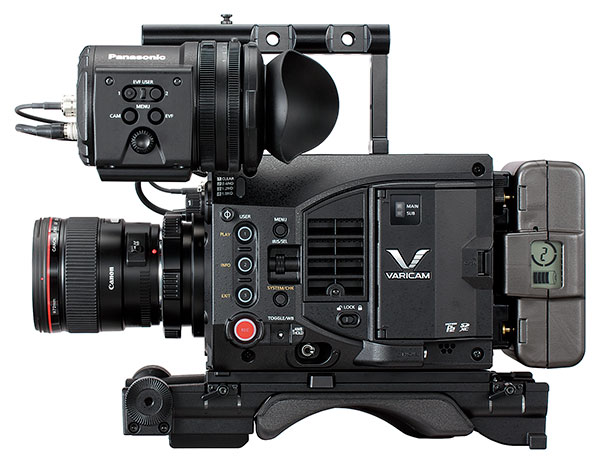
DE: We saw a lot of emphasis in the briefing on LUT compatibility with your high-end VariCam pro video cameras. Do you foresee a lot of use cases where people will mix GH5 II or GH6 footage with that from the Varicam or S1H?
Mr. Yamane: I think there are quite a lot of cases. As for the current G series, we have heard from the market not only about Varicam, EVA1 and S1H, but also cases mixed with S1 and S5. Also, even if you change the camera according to the TPO [Time, Place, Occasion], it is very useful to be able to combine footage with familiar Log / LUT parameters, while paying attention to post-production image creation.
The mobility of a small mirrorless camera [can be useful when shooting certain scenes or to allow for more creative footage], but what is important here is the consistency related to the "philosophy" of image creation. If this is different for each camera, customers will [be dealing with lots of inefficiencies in their post-production workflow.]
In this respect, LUMIX is designed with an emphasis on matching the same LUT with the Varicam series V-Log and V-Gamut, which are especially popular from the viewpoint of wide gradation, wide color gamut and skin detail. I find it very important that the fans who have used LUMIX cameras previously can easily use the GH5M2 with the same approach.
[DE note: This struck me as a significant point that I don't think I'd been sufficiently aware of earlier. Even though they're aimed at a much lower price point, it seems that video-oriented LUMIX cameras have always been designed to match the LUTs on Panasonic's very high-end Varicam cameras. It makes perfect sense, but it had never occurred to me before that MFT LUMIX models would somewhat natively fit into Varicam-based workflows and post-production.]
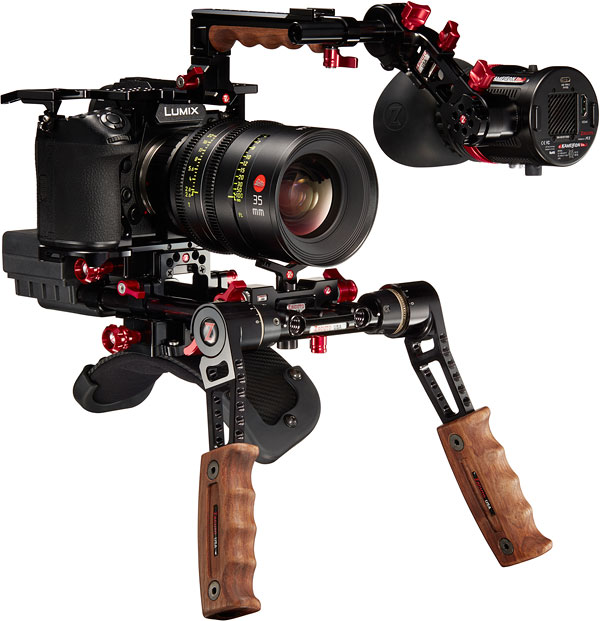
JG: Panasonic announced the S1 and S1R at CES in 2019. Since then, you've added the S1H and S5 full-frame cameras. Can you speak to how the full-frame S system has impacted the development of Micro Four Thirds cameras and lenses? Is there much overlap between the teams working on full-frame product development and M43 product development?
Mr. Yamane: We are developing our full-frame and Micro Four Thirds systems as a "Double Driving Force" of our business, and it is possible to develop both systems in a timely manner by sharing the basic technology. That is our strength.
For example, the full-frame S1R, S1 and S1H mirrorless cameras introduced in 2019 have undergone uncompromising technological development in order to withstand the requirement for professional expression and the harsh shooting environment, but many strengths, cultivated in our Micro Four Thirds systems, were utilized.
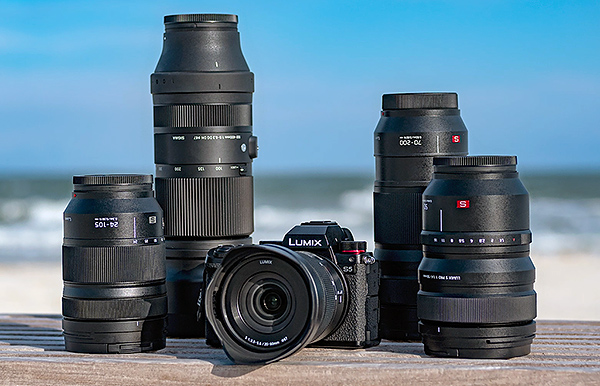
Last year, we introduced the S5, where the high performance recognized by professionals in the S1 series, is condensed into a compact body. And the uncompromising image creation, operability, robustness and expandability cultivated in the development of this S series have been horizontally expanded to the GH5M2 and GH6.
As for interchangeable lenses, we are developing distinctive lenses that meet the user needs of both systems, while sharing technological evolution, such as high-speed AF and Dual-IS.
In this way, by mutually utilizing the strengths evolved in new products and by efficient development, we are creating a flow to be able to invest in concentrating on the next strengths. The development team has also put in place a mechanism to efficiently develop unique and creative products that take advantage of the features of both systems while evolving their strengths through the development of common technologies.
[Ed. note: Given the rapid expansion of Panasonic's full-frame S-series, there was a sense that Micro Four Thirds camera development had been put on the back-burner. With the announcement of both the GH5 II and forthcoming GH6 that clearly doesn't appear to be the case. Further, it's also great to see and quite interesting that Panasonic is able to essentially co-develop two camera lines, one full-frame and one MFT, by coordinating and sharing technological developments and innovations between the two camera platforms.]
JG: Having an established position in the Micro Four Thirds market has allowed Panasonic to develop a lot of lenses for these cameras. Your S series is much newer, of course, and its lens lineup is undergoing rapid expansion. However, alongside the GH6, you also announced the development of a new 25-50mm f/1.7 lens for MFT. Can you comment on the general goals for your Micro Four Thirds Lumix lenses moving forward? Should users expect continued expansion of your MFT lens lineup? And if so, will the focus be more on consumer-grade lenses or pro-grade lenses?
Mr. Yamane: As for MFT lenses, by currently offering 31 lenses we already support a quite wide range of shooting applications, but in the future, we will develop a group of lenses that even better meet the needs of creators, while balancing the development with full-frame lenses.
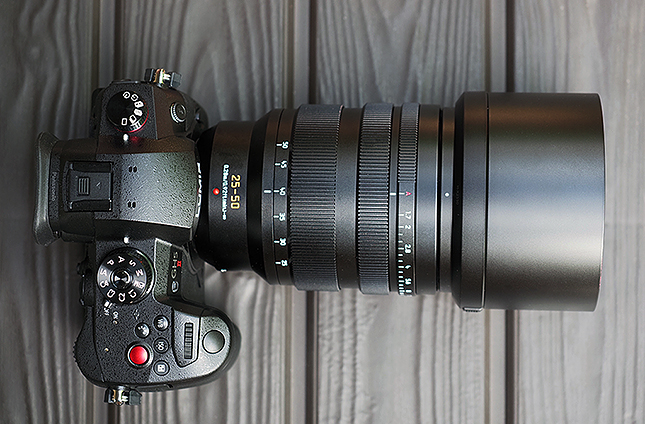
The LEICA DG 25-50mm F1.7 announced the other day is a lens that further enhances the quality of creator's content production and is the best match for the GH series. Combined with the 10-25mm F1.7, which has already been introduced to the market and has been highly evaluated by many creators, it provides excellent performance from 10mm to 50mm (35mm equivalent: 20mm to 100mm), so you can shoot creative images like never before. These two lenses not only have a shared f/1.7 aperture, but also shared optical performance, shape and operability, so you can improve the efficiency of the workflow from shooting to post production. With only these two lenses you can create high quality work.
LUMIX will strengthen the professional-grade lens group that realizes high expressiveness, and develop distinctive lenses unique to MFT, which will innovate the creation of future works. Please look forward to future developments of Micro Four Thirds LUMIX G series lenses.
JG: Micro Four Thirds products offer a lot of performance in compact, lightweight packages, especially compared to full-frame cameras and lenses. Do you find that the markets for MFT and full-frame are separate from each other, or are there customers who are purchasing both Panasonic MFT and full-frame products for various photo and video applications?
Mr. Yamane: I believe that the full-frame and Micro Four Thirds markets will continue to coexist. In particular, the video market continues to expand, and the value of full-frame and MFT is increasing. In fact, there are many creators who use both systems, full-frame to pursue expressiveness and MFT with an emphasis on mobility and high speed. By taking advantage of each characteristic, even more creative content is created. Going forward, we will continue to grow our business with these two pillars, full-frame and Micro Four Thirds, as a "Double Driving Force."
JG: With the S series cameras delivering excellent stills photography performance, especially the S1R, do you think that moving forward the general marketing position of the MFT system will shift away from stills and more toward video or at least hybrid photo/video applications? Do you believe that the inherent strengths of MFT, such as compact size and smaller sensors with faster readout, lend the system more toward video than still photography?
Mr. Yamane: Certainly MFT has many strong aspects in video due to its excellent mobility and high speed. However, the small size, light weight, and mobility of MFT can provide advantages not only for videos, but also for still images. The miniaturization of the body and lens makes it easier to shoot videos and still images even at high magnification, for example wildlife, wild birds, mountains, sports etc., and is expanding shooting opportunities. Furthermore, MFT is capable of moderate depth of field and high-speed readout, and can be called an extremely suitable format for people who are trying to create works with a hybrid of still images and videos.
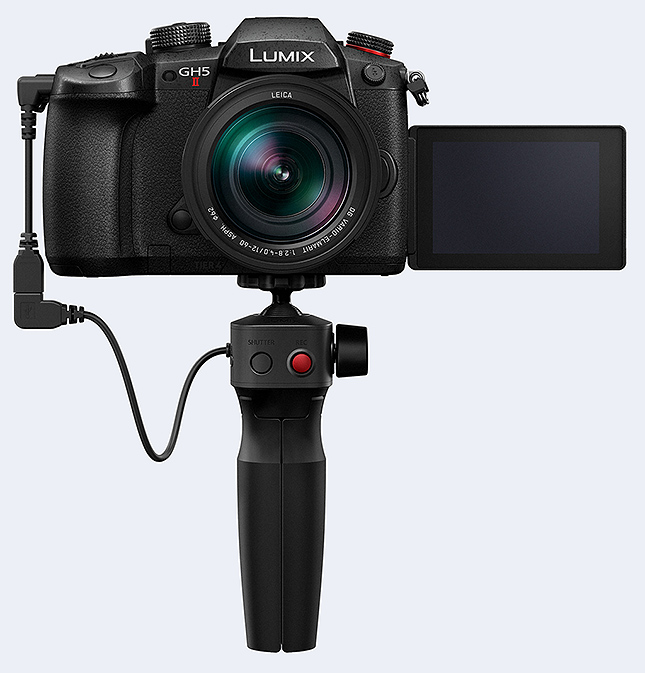
William Brawley (WB): Back in March 2020, when Dave Etchells interviewed you in Japan, you discussed how Panasonic was "studying the balance between full-frame and Micro Four Thirds" in terms of value provided by the larger sensor and the value of the more compact size of MFT cameras. This was in regards to the more photo-centric Lumix G9. Do you feel that more photo enthusiasts and photo-oriented customers will choose full-frame Lumix cameras and video creators will lean towards Micro Four Thirds? Or do you still see strong demand from customers for powerful Micro Four Thirds photo cameras?
Mr. Yamane: There is no segregation in full-fame for still images and MFT for videos, in both formats customer needs for still images and videos are existing. In fact, many creators choose either format depending on the content they want to shoot. As for full-frame, besides still photography there are also the needs of impressive-scenario video shooting. Micro Four Thirds is utilized for still image shooting due to its small size, light weight, mobility and convenience for shooting with high magnification zoom. It is also very useful for shooting non-scenario videos, such as documentaries, due to its optimal depth of field, and I believe we can respond to more creators by leveraging these strengths.
[Ed. note: We're not clear on exactly what Yamane-san meant here by "impressive-scenario" shooting, but judging from the context, it seems he's probably referring to the very shallow depth of field that's easier to obtain with full-frame cameras than MFT ones.]
JG: With the continued growth of smartphone photography and video performance, how has this impacted the market for Panasonic's interchangeable lens cameras? Has the impact of smartphones been felt more acutely in the MFT market or the full-frame market?
Mr. Yamane: The rise of smartphones has had a major impact on the demand for fixed-lens compact cameras. On the other hand, the demand for full-frame and MFT mirrorless cameras is stable. Although smartphone camera performance has improved, there are restrictions on what can be done, and digital cameras can take expressive videos and still images that are clearly different from smartphones. In particular, video production by young people is increasing, and mirrorless cameras that can shoot higher quality content than smartphones are attracting attention. Creators want to shoot and share images that are cutting edge and different from others. By capturing these needs and creating products, strengthening compatibility with smartphones, and speedily responding to diversifying needs, I expect stable demand for digital cameras in the future.
JG: Over the last few years, we've seen fewer entry-level camera models released and a greater emphasis on high-end cameras for enthusiasts and professionals. What do you believe has been driving this change, and is this something that you feel has been present in Panasonic's camera and lens lineup as well?
Mr. Yamane: Due to the influence of smartphones, the demand for entry-level cameras has decreased. On the other hand, it has led to an increase in the creator population and the demand for high-end cameras, such as full-frame and MFT mirrorless cameras, is stable.
The needs of creators are increasing, and we will strengthen our product lineup to meet these needs.
JG/WB: The COVID-19 pandemic has had wide-ranging impacts on the global market and supply chains. You mentioned back in March of 2020, that Panasonic's supply chain and production had already been affected by COVID, but that it had begun or already returned to normal. Now that we are over a year later into this pandemic, has this changed at all for Panasonic? Do you anticipate there being any issue producing a sufficient supply of the GH5 Mark II or the GH6?
Mr. Yamane: I would like to express my sincere gratitude to David Etchells for visiting us under the pandemic situation of COVID-19 in March last year. During this one year, our supply chain was greatly influenced by the pandemic. Moreover, there is now a global shortage of semiconductors in every industry, and we are also affected. On the other hand, we are rapidly reforming our parts procurement system. Therefore, we will continue to deliver new products such as GH5M2 and GH6, so please look forward to it!
Finally... (I haven't been asked, but...) Even though there are some speculative articles in the media, as we talked about today, we are actively investing in the development of advanced technologies for both full-frame and Micro Four Thirds platforms. I promise to continue to actively promote our business by creating exciting products. Please look forward to the future development of LUMIX.
Closing Thoughts
Once again, a very interesting discussion with Mr. Yamane! Panasonic appears confident in its ability to develop both full-frame and Micro Four Thirds cameras side-by-side, especially since both camera lines can benefit from and share similar technology and features. A technological innovation or development will occur in one camera line, but then make its way into the other, and vice-versa. We're also pleased to see that Panasonic appears to have weathered the pandemic-related production and supply chain hardships that occurred over the past year. However, the current global semiconductor shortage is a concerning problem that's affecting multiple companies and industries beyond just digital imaging. Fortunately, Panasonic seems ready to overcome this hurdle with new supply chain procedures.
It also appears that Panasonic is confident in the future of Micro Four Thirds cameras, and in the future of standalone digital cameras too, despite the continuing growth in popularity and technological innovations happening in the smartphone camera space. Smartphone cameras continue to get better and better, with improved image quality and unique computational photography-based features that help them overcome some of the physical and optical limitations of these tiny camera systems. However, there are still aspects of photography that smartphone cameras cannot do (yet?) or do as well as standalone cameras with larger sensors and lenses, such as high-magnification telephoto shooting (i.e. wildlife photography) and high-quality video production. Panasonic seems aware of this and poised to respond with products that offer creators what smartphones cannot.
We're excited to get our hands on the new Lumix GH5 II with final-production firmware very soon, not to mention the new flagship GH6 hopefully at some point later this year. What are your thoughts? Are you excited about the GH5 II and the GH6? Do you think Micro Four Thirds can live alongside full-frame mirrorless cameras? Leave your questions and comments down below!
